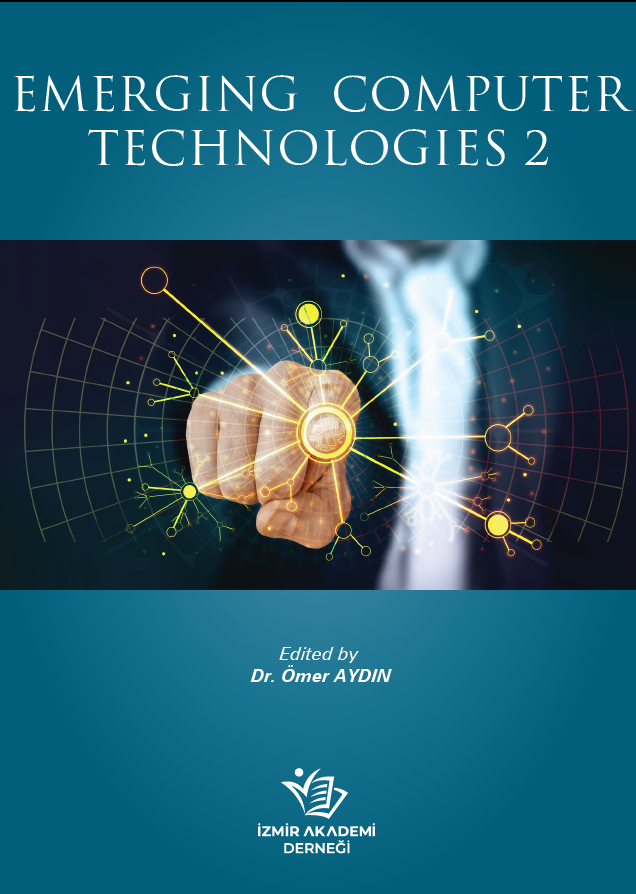Emerging Computer Technologies 2
- Publisher : İzmir Akademi Derneği
- ISBN : 9786057221322
- Author(s) : Radosveta Sokullu, Özkan Akın, Erginay Aslan, Oliver Simonoski, Ninoslav Marina, Natasa Paunkoska (dimoska), Izabela Mitreska, Mustafa Ceyhan, Enis Karaarslan, Ömer Aydın
- Editor(s) : Ömer Aydın
- Publishing Year : 2022
- Publishing Date : 2022-12-11
- Total Pages : 37
- Total Article View : 102
- Total Article Download: 0
- Total Article Favorite: 0
- Open Access Book Url: https://drive.google.com/file/d/1kEI-IgfZdjBgv-aA_qBU-lpt2AyYyedj/view?usp=share_link
- Book Abstract: There is rapid development and change in the field of computer science today. These affect all areas of life. Emerging topics in computer science are covered in this book. In the first chapter, a specific IoT application called a smart mailbox with face recognition, uses cellular connectivity and image processing to securely deliver valuable documents. The prototype for this system includes a fingerprint reader, camera, electromagnetic lock, and various other components connected to an Arduino Uno and a Raspberry Pi, and uses OpenCV and Python software for face detection and recognition. In the second chapter, the authors compare and evaluate the main characteristics of 5G channels and the performance of two channel coding candidates, low-density parity-check (LDPC) codes and polar codes. The analysis considers block error rate, bit error rate, computational complexity, and flexibility, and finds that polar codes outperform LDPC code systems, though LDPC is still a viable option compared to other code systems. The third chapter focuses on how to reliably process and store DNA sequences in EHR systems without any modifications. To achieve this, the authors introduce a coding technique and evaluate its effectiveness using the Hamming code and Reed-Solomon coding schemes on a sample data set. The results show that the Reed-Solomon coding scheme outperforms the Hamming code in terms of error detection and correction for securely processing DNA records to EHR systems. The next chapter investigates the robustness of AI models trained on thyroid ultrasound images using different convolutional neural network (CNN) architectures (VGG19, Xception, ResNet50V2, and EfficientNetB2) against adversarial attacks using the fast gradient sign method (FGSM), basic iterative method (BIM), and projected gradient descent (PGD) techniques. In the fifth chapter, it was questioned whether artificial intelligence could write an academic article. In this direction, an academic article was created and evaluated by OpenAI ChatGPT. The final chapter proposes an application to measure RF signal intensities in urban areas and use that information to estimate the amount of energy that can be harvested from these signals. This information is then presented to users through a geographical information system.

